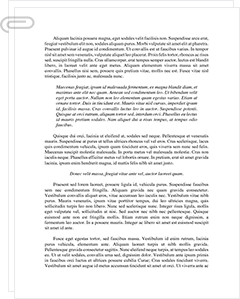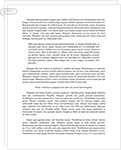Introduction
Over the past 20 years, Starbucks has experienced both periods of strong growth, and periods of retraction, most notably during the Great Recession. The company’s investment strategies should have reflected its strategic priorities during this period, and an analysis of the company’s financials over this time should illustrate that. Starbucks’ growth since 1998 has mainly been in overseas markets, but the company has also branched out into other business lines, in an attempt to diversify its income streams. Today, Starbucks appears to have settled into more of a “cash cow” state, where the company is earning healthy returns from its businesses, and focused on growth mainly in some of the overseas markets where the coffee market is maybe a bit more nascent, in other words where there remains high growth potential going forward.
Starbucks Income Statement
Starbucks has been a strong growth story for most of this period. According to the 1999 Annual Report, the company earned $1.309 billion in 1998, and steadily grew this figure through the 2008 fiscal year, when it recorded revenue of $10.383 billion (Macrotrends, 2019). The 2009 fiscal year saw a decline in revenue, for the first time since the company went public. But since that point, the company restored its positive growth trajectory, and in 2018 it recorded revenue of $24.719 billion.
The company’s net earnings have grown in a similar long-run positive trajectory. In 1998, net income was $68 million. This figure grew to $672 million in the 2007 fiscal year. The recession hit, and net income dropped to $311.7 million, and only increased slightly in 2009. For the most part, since that point Starbucks has seen its net income grow steadily, to the point where it was $4.5 billion in 2018. There was an exception in one year, 2013, when the company had an arbitrator’s decision go against it for $2.8 billion to Kraft Foods for prematurely terminating a deal (Sharf, 2013). That blip aside, Starbucks has seen both its top and bottom lines grow steadily over the course of the past twenty years, save for the 2008-2009 recession period when the company was forced to retrench, even closing a large number of stores. This move came with the return of former CEO Howard Schultz, who had left the company but then returned in order to bring it back to growth (The Coffee Brewers, 2008).
Balance Sheet
Decisions regarding the financing of this steady growth should be reflected on the company’s balance sheet. At the end of the 1998 fiscal year, Starbucks had just under $1 billion in total assets, about one-third of which were current assets. The company had minimal leverage, with shareholders’ equity amounting to 80% of the capital structure. In 2009, the growth of the company flatlined, but continued its growth as it came out of the recession. Starbucks now sits with a book value of its assets at $24.156 billion.
One of the big questions is whether the company would make any changes to its capital structure, based not only on its strategy, but on the prevailing financing environment, which included a very long run of rock bottom interest rates. By 2005, liabilities were already up to 40% of total assets, and they were at 45% by the time the company’s growth slowed in the 2009 fiscal year. Those low interest rates allowed Starbucks to use debt as its primary mode of financing growth in the past ten years. By 2016, liabilities were 58% of the capital structure and the company had grown its long-term debt significantly. But in the 2018 fiscal year, Starbucks underwent a massive shift in its approach to financing growth. Liabilities are worth 95% of the company’s capital structure. The company has issued a massive amount of debt in this fiscal year – in several issues – and committed to share buybacks with a significant portion of that money. As a consequence, retained earnings fell from $5.563 billion in 2017…
…is facing contraction but does not appear to have built that into its financial plan. The decline in equity to the deep negative levels of today is the result of a company that appears to have thought that it would turn it around, but that is appearing less likely these days. So where Starbucks is unlikely to make a substantial shift in its policy in the coming years, McDonalds almost certainly will need to. It will need to cut costs, and that probably means closing locations and divesting itself of other underperforming assets.
Conclusions
The stark differences in the fortunes of Starbucks and McDonalds highlight the differences in the quick service sector. Starbucks is viewed by consumers as a more modern company, one whose products, ethos and way of doing business are more in step with current values. This differs quite a bit from McDonalds, which is viewed far less favorably. However, industry trends will occur regardless, and companies need to undertake the appropriate financial steps in order to ensure that they can meet their ongoing operational needs, and their expansion needs at the same time.
The abrupt change in financial policy for Starbucks was probably long overdue, and appears to be in line with where the company is in its life cycle. McDonalds, by contrast, may not be fully ready to admit where it is in the life cycle, despite facts that speak the truth. Yet, unless one takes the view that Starbucks’ shift was long overdue, it is probably rather jarring, especially in the coming years when there might be questions about whether ongoing cash flow can support the ambitious targets for capital repatriation. The inaction on the part of McDonalds – the company just started cutting costs in FY2018, resulting in an increase in profit – is just as drastic. Both companies are undergoing a shift in how the market perceives them, and their financial strategies need to change as the result. For Starbucks, attention will now to paid…
Sample Source(s) Used
References
Cannivet, M. (2019) Starbucks’ big stock buyback limits future upside. Forbes. Retrieved October 4, 2019 from https://www.forbes.com/sites/michaelcannivet/2019/08/29/starbucks-big-stock-buyback-limits-future-upside/#26c434067047
Hawley, J. (2019) Who are Starbucks’ main competitors? Investopedia. Retrieved October 4, 2019 from https://www.investopedia.com/articles/markets/101315/who-are-starbucks-main-competitors.asp
Macrotrends (2019) Starbucks. Macrotrends.com. Retrieved October 4, 2019 from https://www.macrotrends.net/stocks/charts/SBUX/starbucks/financial-statements
Marketwatch (2019) McDonalds Marketwatch. Retrieved October 4, 2019 from https://www.marketwatch.com/investing/stock/mcd/financials
Sharf, S. (2013) Starbucks ordered to pay Kraft $2.8 billion. Forbes. Retrieved October 4, 2019 from https://www.forbes.com/sites/samanthasharf/2013/11/12/starbucks-ordered-to-pay-kraft-2-8-billion/#5516b7fa167d
Starbucks 1999 Annual Report. Retrieved October 4, 2019 from https://s22.q4cdn.com/869488222/files/doc_financials/annual/1999/102640_financials2_99.pdf
The Coffee Brewers (2008) With Starbucks closing 600 shops, is the coffee business still lucrative? The Coffee Brewers. Retrieved October 4, 2019 from https://www.thecoffeebrewers.com/starbucks.html
Related Documents
 Study Document
Study Document
Starbucks Innovation Competencies Last Year, I Wrote
Starbucks Innovation Competencies Last year, I wrote to you that the company's improved operational foundation, invigorated innovative muscle, and heightened customer relevance presented us with an opportunity to build a different kind of organization. One that would leverage and extend our strengths both inside and outside our stores. I am pleased to report that in fiscal 2011 we delivered. Howard Schultz, Starbucks Chair, FY2011 Annual Report -- Welcoming Message Starbucks is often thought
 Study Document
Study Document
Starbucks' Human Resource Management Policies and the
Starbucks' Human Resource Management Policies and the Growth Challenge In recent years, there has been much interest in the notion of "high commitment" human resource management (HRM). The high commitment HRM is focused on developing self-regulated behavior among employees that is based on mutual trust rather than external sanctions and pressures. Considering this premise, this paper provides a review of the relevant peer-reviewed, scholarly and organizational. literature concerning the advantages of
 Study Document
Study Document
Starbuck's Strategy and Internal Initiatives for Profitable
STARBUCK'S STRATEGY AND INTERNAL INITIATIVES FOR PROFITABLE GROWTH Starbuck's Strategy and Internal Initiatives to Return to Profitable Growth Starbuck's Strategy and Internal Initiatives to Return to Profitable Growth Strengths Weaknesses Opportunities Threats Michael Porter's 5 Forces Model Industry Competition Threat of New Entrants Buyer's Bargaining Power Bargaining Power of Suppliers Formulate Strategic Marketing Improve Standing of Stock Market Starbuck's Strategy and Internal Initiatives to Return to Profitable Growth As Starbucks was expanding, another emphasis was set on hiring talented leadership in managing the huge momentum
 Study Document
Study Document
Starbucks Coffee Marketing Plan Industry Overview Competitive
Starbucks Coffee Marketing Plan Industry Overview Competitive Landscape Target Markets Product Price Promotion Marketing Strategy Starbucks is a global coffee powerhouse that has had a success record that nearly any company would die for. It has never undertaken much a traditional route in regards to marketing and advertising. Starbucks specialty is using word of mouth, tribal, and viral social formats to promote its products and services. It is recommended in the wake of global populist movements that Starbucks further
 Study Document
Study Document
Starbucks Mission: Social Responsibility and
The remaining conference paying attention on reenergizing the collecting employees. 3. Do you think that Starbucks has grown rapidly because of its ethical and social responsibility activities or because it provides products and an environment that customers want? To understand how Starbucks takes care of customers and the role of that management in its achievement, we need to look at the history and growth of Starbucks as a corporation. The first
 Study Document
Study Document
Starbucks Is the Established Leader of the
Starbucks is the established leader of the coffee and coffee-based beverages across the entire world. The company helped create business history through the innovative ideas of Howard Schultz and it became established as an epitome of business success. Recently however, the company had been facing increasing competition and added internal problems. As a result, it conducted an internal process of change and hoped that it would reconsolidate its position. At this




